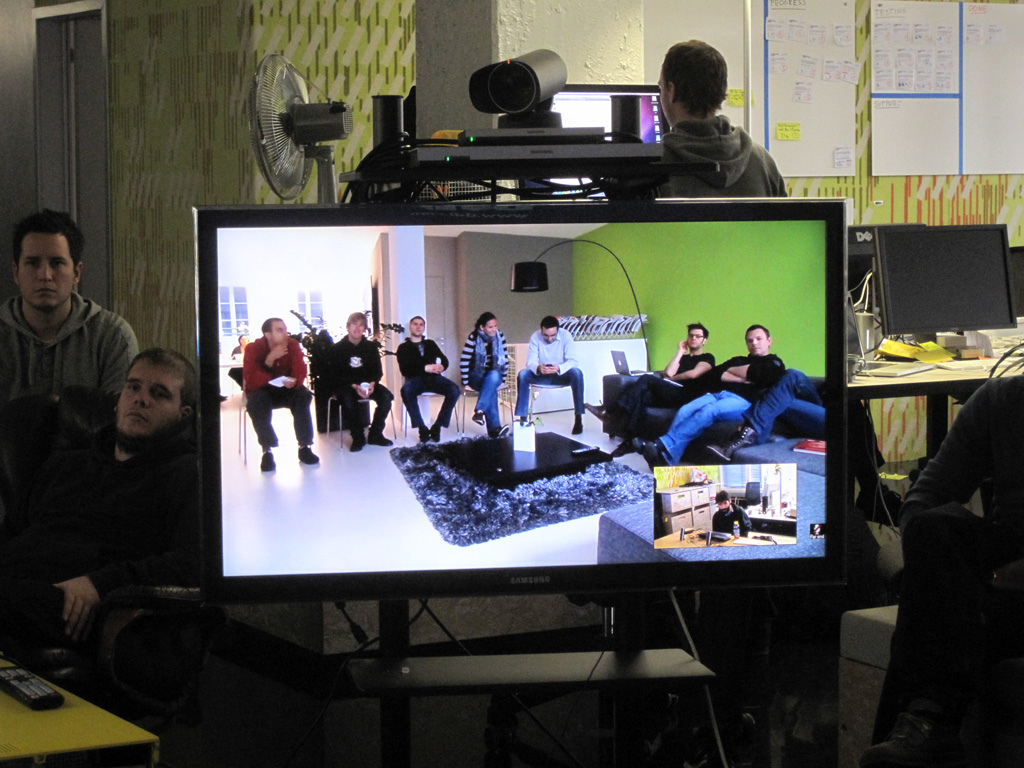Do you know how employees in your company are using video collaboration, or if they’re even using it at all? Utilization is a big indicator of how video is impacting other parts of the business, and a must have for any video IT manager’s tool belt. Frequently, due to lack of easily available video collaboratihigh-level high level video utilization and adoption are used as proxies for “productivity gains” that indicate the monetary return on video investments.

- My organization is just beginning a video implementation
- My company has invested in video, but I can’t seem to get people to use it regularly.
- My organization has a video collaboration network in place, and we’re eager to integrate collaboration into company culture.
- My organization has a combination of new video systems and old out-dated one’s experiencing less than adequate utilization.
- My organization uses video in all departments and video dominates the majority of company communication and collaboration.
Utilization is a huge metric for any video IT manager or video admin. Every company, no matter the size, wants to know how their video investment is being used, and how it’s impacting the bottom line. Without blinking, here are a few of the things that IT should be able to say that video collaboration is doing for the company:
- HR’s hiring time has decreased by X%.
- Our product time-to-market has been reduced by X amount. Example: product launch time compared to pre-video collaboration product launches has been reduced by 2 weeks.
- Increased productivity from video collaboration has led to increased revenue, more closed opportunities in Q1 and a big improvement in sale team’s product expertise.
DEPRECIATED ASSETS AND WASTED RESOURCES
In an ideal world where utilization is at it’s peak and network bandwidth is primed to handle increases in video traffic – IT could report on all of the above with confidence. Unfortunately, this not an ideal world, and not all IT folks have the metrics to report on utilization at that level. vAnalytics™ users in our customer base reported that over ⅓ of their video endpoints were being used less than 2 hours per month on average. Calculate the cost of ⅓ of video endpoints in your network. Lets say we’re an enterprise company with 1,000 endpoints. We’re losing money on 333 units that cost around $1,889 apiece totaling $629,037. The longer they sit there, the more money you’ll lose.
LET’S TALK UTILIZATION
It’s time to get your users excited about using video collaboration. These best practices have helped us get the most out of our video network and they can help you too:
#1 WHO’S KICKING BUTT WITH VIDEO?
Identify your power users. If you have a new implementation, this may take a bit more time, but once you’ve nailed down your power users, they will become a huge asset – helping integrate video into company culture. Find out why they use video and how it makes their job easier – use this information to help influence your bottom users.
#2 MAKE SCHEDULING VIDEO CALLS EASY
Instead of forcing users to schedule a meeting on their calendar, and then schedule a video resource through a web portal, have a video scheduling tool that works automatically with your company’s email calendar – Microsoft Outlook or Gmail. Your company needs a simplified solution for scheduling video conferences. Get your power users to use this simple scheduling tool when setting up video meetings with other employees to demonstrate the awesome user experience.
#3 DESIGN (AND LAMINATE) CLEAR INSTRUCTIONS
Find your bottom users and most under-utilized endpoints and create a simple bulleted list of instructions just for them. Video scheduling and conferencing should be easy for the most non-technical person in your organization. Get them out of the habit of calling IT in for every little problem. You can also change the default meeting invite instructions that are generated by your system. If you find users are having fewer problems when a certain procedure is followed (i.e. by asking top users), then you can automagically put that procedure at the top of these invites.
#4 MAKE BEST PRACTICES AVAILABLE
Create a web portal to store all of your video conferencing best practices, training materials, usage demos and troubleshooting videos for your users to access whenever they choose. Spread the Gospel of the top users and new investments that are designed to make video resources more productive on a daily, weekly, or monthly basis with a company-wide email from your team.
#5 UPDATE YOUR EQUIPMENT
It may be time to change out some of that legacy equipment so you don’t have to create a user manual for every individual conference room. Keep your equipment up to date and avoid interoperability issues. You’re going to have to do this sooner or later. Might as well be sooner.
In order for any of the above best practices to even be possible you need to know what is going on in your network.
Remember there is a price associated with every endpoint, just like there is a different price for your call licenses, hardware, software, bandwidth and time spent troubleshooting your network. That being said, I’m starting to think this article should be entitled, “How to get the most out of your video conferencing investment”.






